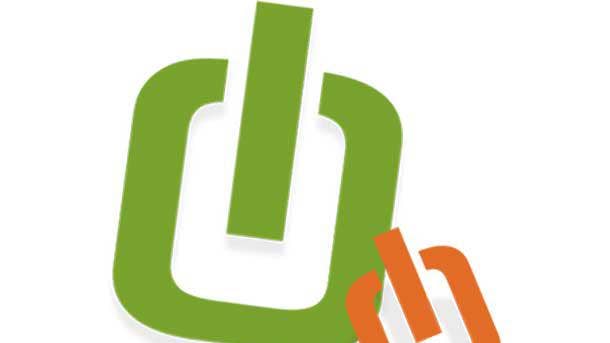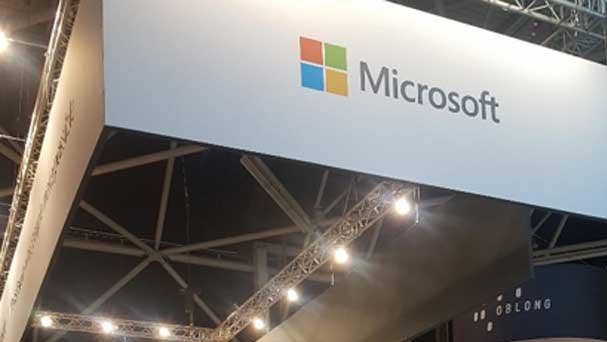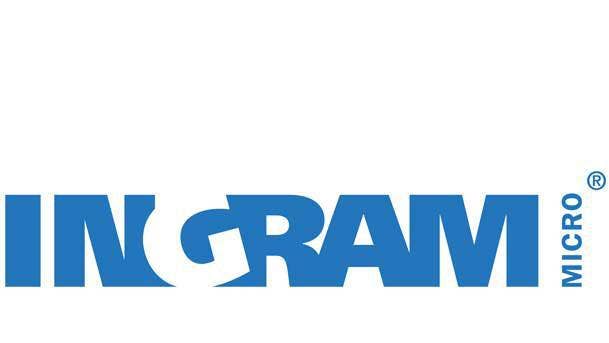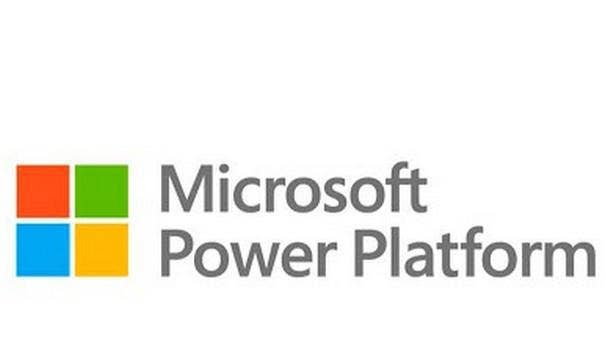Microsoft Partner RMON Networks Takes On NCE Changes, Security Demands
‘A couple of years ago, if you told me that Microsoft was a big security player, I would have laughed at you,’ Howard tells CRN in an interview. ‘But the more I became aware of what they were doing and why they were doing things, the more I decided to align the organization with them.’
RMON Networks is a Microsoft partner navigating a time of great change for the tech vendor. Not only has RMON had to adopt Microsoft’s new policies under the “New Commerce Experience” platform and rollout, but the company is keeping up with widespread demand for the company’s cloud and security tools, CEO Tim Howard tells CRN.
“A couple of years ago, if you told me that Microsoft was a big security player, I would have laughed at you,” Howard told CRN in an interview. “But the more I became aware of what they were doing and why they were doing things, the more I decided to align the organization with them.”
In Microsoft’s most recent quarterly earnings, the company reported that security business revenue surpassed $15 billion over the past 12 months, up about 45 percent year over year.
[RELATED: Channel Chief Rodney Clark Defends Microsoft 365 Licensing Model]
“There’s always those other vendors out there,” Howard continued. “The Webroots. The CrowdStrikes. The Trend Micros. But why not play with the vendor where I can give my staff a single pane of glass that would have the ability to look across multiple platforms to obtain data real time?”
As for NCE – which includes some unpopular policies such as a 20 percent premium on monthly subscriptions to the products including Microsoft 365 and Dynamics 365 and a three-day window before subscriptions terms are locked in – Howard said he’s accepted the changes as inevitable and a way for Microsoft to make its subscription model more sustainable.
“Listen, we were just as – upset is the word I’ll use right now – as everyone else is,” said Howard, whose company is based in Hampstead, N.H. “Was it stressful? Absolutely. Will we make mistakes? Of course, we’re human. But we’re forging forward. At the end of the day, a lot of our customers are understanding and they’re just paying for it and they’re locking in. And they’re locking in now because they understand the discounts that are there.”
Here’s what else Howard had to say to CRN.

What’s been in demand the past quarter?
Since COVID’s really hit, I think a lot of what has been hot has really been security and cloud.
And they go hand in hand, obviously, as well as disaster recovery. Because at the end of the day, folks are thinking, ’Jeez, you know what? I’ve moved off of local servers.’ So now we’re in the cloud with Microsoft, whether it’s Office 365, Microsoft 365, whatever flavor, from our perspective as a Microsoft partner.
And then they’re not thinking, ’Oh, jeez, I have to back up those mailboxes. Or I have to bac kup SharePoint. Or whatever the scenario may be.
So really continuing to educate our customers or prospective customers to the entire solution and what you can do and what you can’t do. So education from the perspective of awareness has been – I don’t want to just say last quarter – but it’s really been the challenge, if you will, as more and more of our existing customers and prospective customers have approached us to help them on their journey.
With cloud, has weather become less of a disastrous event for your customers?
It really potentially can be because I think of last weekend here in New Hampshire, specifically, but the Northeast where we had in some areas ice and sleet and in some areas snow.
So if a customer is in the cloud, and more and more of our customers have been back to the office. So let’s just say their ISP (internet service provider) does go down. Well, if they’re in the office, and your ISP goes down, what’s the failover?
So that’s more than just some sort of backup, if you will, from a media perspective. It is, ’OK, let’s talk about redundant ISPs. Or there may be even a CDMA (code-division multiple access) type of a solution out there so that they can go wireless or through the carrier for access.
More and more of the customers have the flexibility to move around. But if you’re a hotel, restaurant or medical facility, you don’t have that luxury.
So we need to constantly be thinking from a business perspective. Our approach is really, let’s strategize with you, let’s think about the worst-case scenarios and how we can bring you out of hard times in the event of said issue.

So how are you all investing to meet customer demand in 2022?
To be honest with you, there’s always the hiring challenge. We had the hiring challenge pre-COVID. COVID hit, people were let go, but then quickly scooped back up out there in technology.
And I think that when I talked about cloud and security, I can’t tell you how many times I’ve shook my head in trying to assess resources to be able to bring in quickly enough to be able to help us in those areas because they’re limited.
And by the same token, we see with our partners and with some of our customers and vendors that older folks are exiting the workforce.
So in talking to a friend of mine who works for a hospital and his team, he’s like, ’Tim, I’ve got a bunch of 70-year-old COBOL developers out there. I said, ‘Wow, COBOL, I haven’t written in that language since college.’ … You can imagine because of today’s technology in and around Python and some of these other languages that are quick.
But there is still the need to be able to try to retain, educate, certify and obtain the talent. That need or that challenge is just going to continue for the next few years anyway.

What’s the conversation with customers like with hacks so prevalent in the news?
I know that a couple of my folks had a conversation with a client yesterday that was questioning why they need all of this security.
And I sort of laughed because the flip side is, let’s introduce you to a couple of SMB (small- to medium-sized business) clients that thought the exact same way until issues arose.
Really helping them understand, what does a breach mean to you? What in your state are you required to do?
We all know the federal government does not want you to pay ransom. So in the event that you’re in health care and you’ve been compromised – what are the things that you are required to do, Mr. business owner? Do you want to risk putting yourself in that position?
I would say that in 2021 and the early part of 2022, we’re continuously bringing on additional security features for our customers.
And we tell them, ’Hey, although we may have the security bundle, we’re constantly evaluating, reevaluating these vendors.’ Because something always transpires and there is another technology that’s always better.
At the end of the day, whether it’s myself here at RMON Networks or anyone else out there, they’ll tell you.
And you see it, we’re all in the reactive state, no matter how much we try to be proactive. We’re proactive to the customer because we’re informing them, but really we’re reactive to the customer because we found out about this Log4J exploit that’s out there or whatever else is out there and we’re trying to cover their business and cover their assets.

Tell us about RMON. Who are your strongest vendor relationships lately?
RMON Networks has been in business for 20 years. Just about under 40 employees here in the U.S. because we do have employees here in New Hampshire as well as spread out throughout the United States. … From a vendor alignment perspective, our main vendor is Microsoft. We like to align ourselves with them, not only from the cloud perspective, but also from the security perspective.
A couple of years ago, if you told me that Microsoft was a big security player, I would have laughed at you. But the more I became aware of what they were doing and why they were doing things, the more I decided to align the organization with them.
Because there’s always those other vendors out there. The Webroots. The CrowdStrikes. The Trend Micros. But why not play with the vendor where I can give my staff a single pane of glass that would have the ability to look across multiple platforms to obtain data real time?
Then there’s always (HPE) for our customers that are still looking for hardware on premise. From an RMM (remote monitoring and management) perspective, we are aligned with Continuum, which is now ConnectWise.
I would say that from the perspective of the main vendors, they would be our main vendors, along with constant evaluation of our backup vendors. That could be Unitrends or StorageCraft or Datto. But even from a backup and disaster recovery perspective, we’re constantly evaluating those folks as well. Because we need to have a single pane of glass in a technology that does not only back up servers if you’re on prem but also has the ability to go out and back up SharePoint sites and Microsoft 365, Office 365 mailboxes, etcetera, etcetera, OneDrive.
It’s a constant challenge. Days and weeks and – I hate to say it – years fly by here. They really do.
How do you decide when to look at a new vendor partner?
Because we’re not specifically vertical-focused, what we do is we look at the technology. We look at what the trends seem to be before they become a trend, if you will, and then we try to align the technology that will go cross-platform slash across verticals so that we can stay consistent.
We don’t want to have a suite of products for our customers that may be different customer, different vendor. We want to be able to align the technology that works well at RMON Networks across our customers so that we can give the same level of experience to all customers and have that wealth of knowledge. Because if one person is strong in one technology, another person is strong in another technology and one person is out or the other, then you’re weak. You’re only as strong as your weakest link.

Microsoft says its security business revenue surpassed $15 billion over the past 12 months. What’s it meant for your business?
They (customers) are not necessarily coming to us to say, ’Hey, jeez, we’re looking specifically for Microsoft as our strategic partner.’ We’re going to them and saying, ’Hey, you really want to look at Microsoft. And here’s the why.’
Once they understand the why and they can actually see the data, they have a better appreciation for it. So their response is just like my response was a couple of years ago.
And that’s a good thing. That’s a good thing because it’s good that the customer can have an option and have an understanding and have been educated. And it’s good for us because we’re constantly evaluating. Although we’re heavily aligned with Microsoft, if a better technology comes out next year that’s better suited for our customers – no harm, no foul. We have to take care of our customers.

How about Microsoft’s New Commerce Experience? Are you all ready for the changes?
Listen, we were just as – upset is the word I’ll use right now – as everyone else is.
But the way I looked at it is before cloud and subscription – when we’d sell an on-premise server, I don’t care if it was an Open Value (Microsoft’s program for small organizations with five or more desktop PCs), Open Value with Software Assurance (Microsoft’s software maintenance program) or whatever the technology was – we had to purchase the server, and then we’ll purchase the server licensing and then we’d have to buy client access licenses. And then you were locked into those client access licenses for the duration of the agreement that you purchased.
Microsoft went from that scenario for years to a pay-as-you-go scenario. … So it only makes sense that they are saying, ’You know what? We were lackadaisical on really enforcing what our true subscription model really was. And now we really have to tighten up the belt.’
It is what it is. And we as a management team and as a sales team said, ’How do we want to approach this?’ First of all, understand what licenses are in the new NCE experience.
Once we had that then we were able to go out and say, OK, which clients does this affect? And of the same clients, what has it affected? And then we went back to those customers, and when we said to the customers, ’Hey, you can pay the 20 percent premium and keep it as it is. Or you can pay up front and call it a day. You’d be surprised how many customers we actually just converted right away. Once people were able to understand the why. And they didn’t want to shoot us as the messenger. They know that we’re not the vendor, we’re a partner. We’re here in their defense. We’re not hiding anything from you.
I’ve said it ever since the beginning. You can do A or B. And if you don’t believe what we’re telling you, go to the website where the pricing is going to be published.
Was it stressful? Absolutely. Will we make mistakes? Of course, we’re human. But we’re forging forward. At the end of the day, a lot of our customers are understanding and they’re just paying for it and they’re locking in. And they’re locking in now because they understand the discounts that are there.

Are you working with a distributor?
Ingram Micro is our primary distributor. So when cloud came out, we actually started with Ingram Micro. I’ll call it indirect. But then we had gone direct with Microsoft for the support.
I really enjoyed going direct. (Then) Microsoft made a bunch of changes in and around their … commitment levels. And we were fine with the commitment levels. But my concern was, jeez, if you have to do $X amount annually, then who’s not to say halfway through our agreement, they’re not going to double that next year.
So I said to the team, here’s what we can do, we can continue to be direct with Microsoft. We can go back to our primary distributor and work through discounts with them. And at the end of the day, we’re still a Microsoft partner. We still have access to all the resources.
But one of the things that I liked when I was talking to Ingram Micro is Ingram was talking about building their Microsoft support experience here in the United States.
So we would have something on the East Coast. We’d have something on the West Coast. And we have customers spread out all over the U.S. So that was fine for us.
Are there challenges? Of course there are challenges. But they were the same challenges that we had with Microsoft direct anyway. So nothing is ever going to be perfect. We just have to work through them positively. … If we’re getting support through Microsoft or Ingram Micro, we’re still supporting the customer. And the last thing they want to do is see the customer move to a different technology.

How about the 72-hour window to change subscriptions under NCE?
If there’s one thing I’m going to knock – jeez, I wish it would be a little bit longer than 72 hours. Whether it’s Saturday or Sunday through a weekend or a holiday, if I had five days it’s a heck of a lot better than the 72 hours that we actually have out there.
What are you looking forward to from Microsoft this year?
We really have heavily looked at Power Platform because there’s a lot of value there.
One of the things that we’re really doing is ensuring that the processes are in place over here and everything is strong from the managed services perspective – what we do with our chocolate cake. Let’s make sure that our chocolate cake is always going to be strong.
And then what are some of the other items that would be applicable to our client base – not specific customer, but client base – that we could then productize for our customers and then roll out.
Analytics is huge. I don’t care what industry you’re in. IoT is a big thing. But it’s always going to be – what is the technology or what are the processes that these folks can use?
Our team is going through certifications for the power platform. But that’s something that I don’t care if you’re a doctor’s office, that’s a small doctor’s office or a car dealership or a large nonprofit, you could leverage those tools in an instant to gather the data that you’re looking for.
And the best thing about that is this technology, the Power Platform, you don’t have to have a CS (computer science) degree like I do to be able to grab what you’re looking for. You can go out there and actually self-educate yourself and self-support your organization.

What kind of sales growth have you seen over the first quarter?
About 20 percent growth in the first quarter. And some of that stuff is opportunities that were lagging from the previous year. We’re six weeks really into the first quarter. Let’s see where we are in a couple more weeks but there are a lot of opportunities that are constantly popping up, which is a really good thing. I look at growth as closed opportunities.
How does that compare to this time last year?
We’re probably up about 15 to 17 percent at this moment.
What’s driving those sales?
Budgets have opened up for the beginning of the year. So clients that were looking to improve their security posture, or they’re ready to go back to the office, or they’re moving back to the office.
The infrastructure upgrades that they were going to do, we’ve seen a couple of those just close recently.
We have seen, believe it or not, on-prem server opportunities coming back because some areas of New Hampshire and Massachusetts and Vermont or rural still. So not everybody can put everything in the cloud. But they are looking to upgrade that older technology.
What are customers saying?
How quickly can you get the technology to me? And we’re saying, ’Well, we’re still in a chip crunch right now. We’re not making this stuff up. So I think that sales could be even stronger and will be stronger as the globe comes out of this crisis.
You’re hopeful?
I’m hopeful. We’re just starting to see some things loosen up, too. We’re trending in the right direction.
But then again, the other part of that is we want to stay within our core stack. We don’t just want to buy another technology because it’s available. If it’s available, but it’s not in our stack, we’re going to wait. And the customers fully understand the why to that. We don’t want to sell something to sell something. We want to sell something to support something that’s scalable for them for the now and the future.

How did you start RMON?
What got me into technology was the movie “WarGames.” And I should have thought of it from a security perspective, as well.
I enjoyed coding. I ended up going off to Wentworth Institute of Technology (in Boston). Dual degree computer science, technical management. Came out as a programmer. Started in the banking industry. … Before Sept. 11 (2001), I was a director of information technology. I was on vacation, went back to work, and I was laid off.
Couldn’t find a job. Three interviews deep, three interviews deep. One-year-old. Wife was pregnant with my daughter. A friend of mine owned a business and was having an issue with his data center. … I stayed on the phone with him until probably two o’clock in the morning, and I walked upstairs and I said to my wife, ’Jeez, I know what I’m going to do.’
I always said I’d own my own business one day but I think it was more for me to hear myself say it. And she said, ’Oh, you’re going to go to work for so and so?’ I said, ’No, I’m going to start my own business.’ And she said, ’What?’ … There was no way I was gonna let myself fail with a wife, a 1-year-old and a newborn coming.
For weeks I was trying to think of what’s the name. Howard Consulting? TGH? Blah, blah, blah, blah.
So I’m on the ground in the living room with my 1-year old. And I had a pen and paper. He had a crayon and whatever. He’s laying on the floor. I’m trying to think of a name. I had to go get a bottle for him or something for him. I came back and he had a red little crayon, and he put a line under the R for remote and then a line under monitoring – the ’MON’ – and I looked and I said, ’RMON Networks, you’re a genius.’ Hence the name of the company, 20 years later.
What keeps you going?
The challenge keeps me going. I enjoy helping people. Technology is ever evolving. In today’s day and age, people aren’t necessarily as appreciative as they used to be. Times have just changed.
But there are people out there that genuinely appreciate what you’re doing for them. And as long as I still enjoy what I’m doing, and I still enjoy my team, which I love dearly, then I’m going to do this.
I’ve said to my wife who works here and I’ve said to other people, there’ll be a day that RMON becomes too big for me or I’m not qualified for that role. And at such time, I’ll move into a different role at RMON. But right now, I’m 52, eager, want to learn, and I’m ready to go at it.